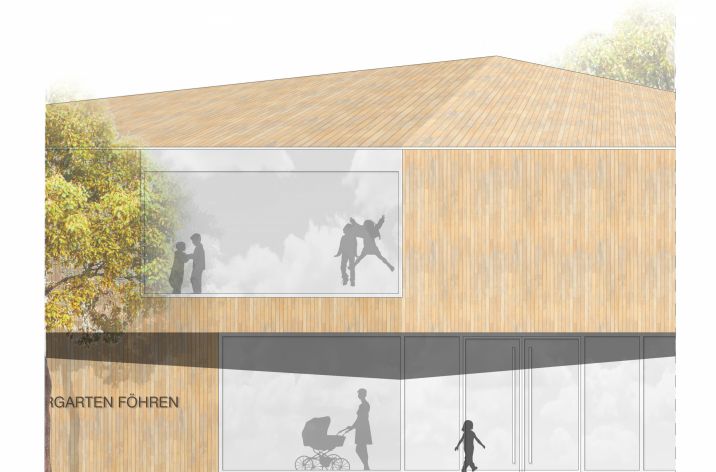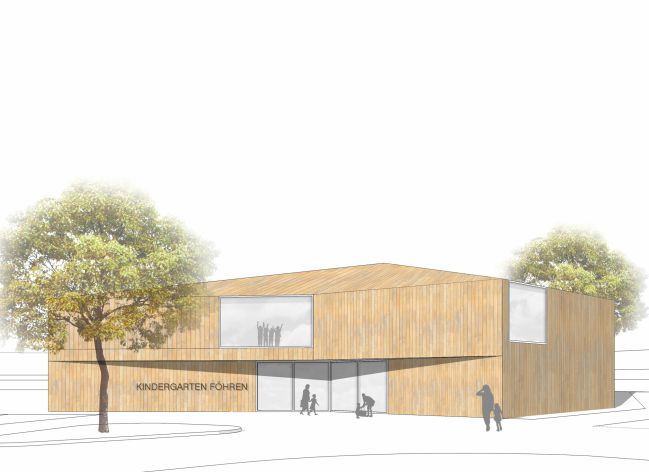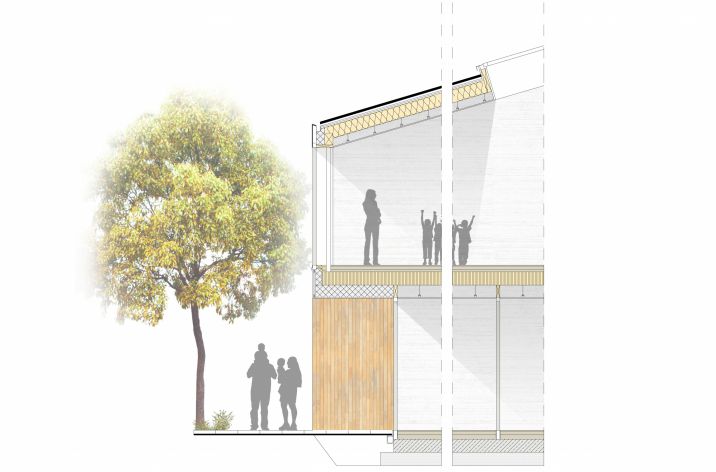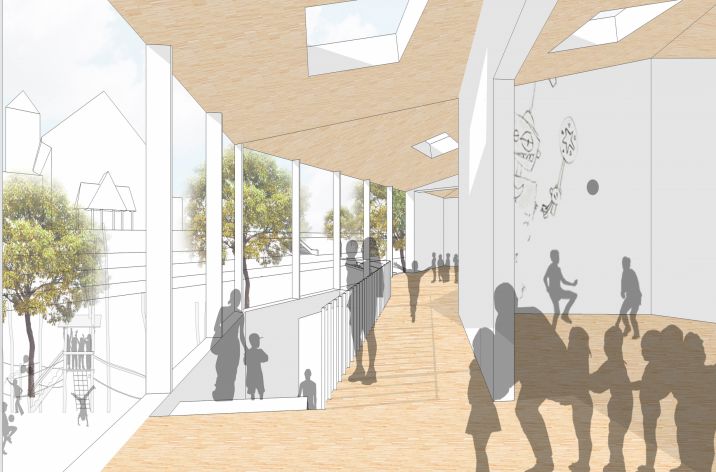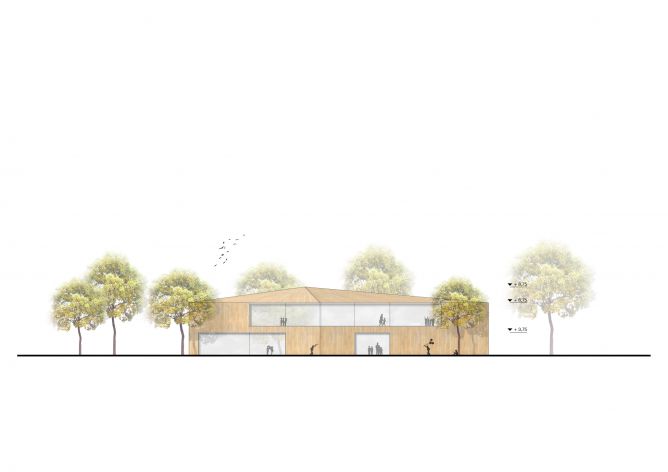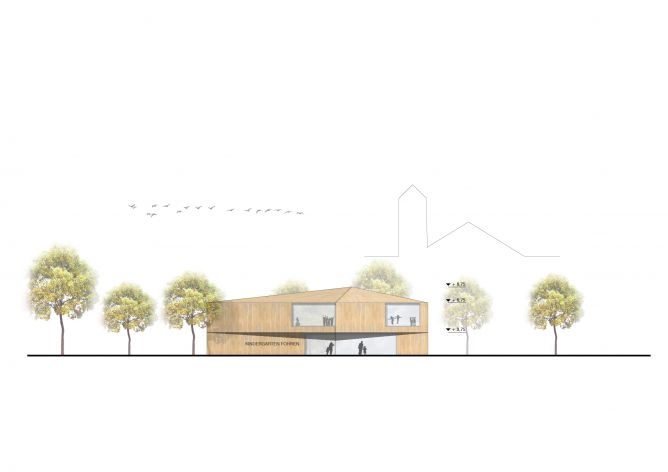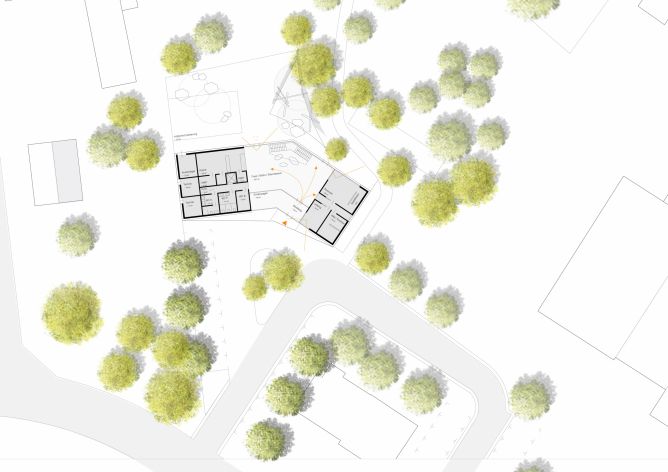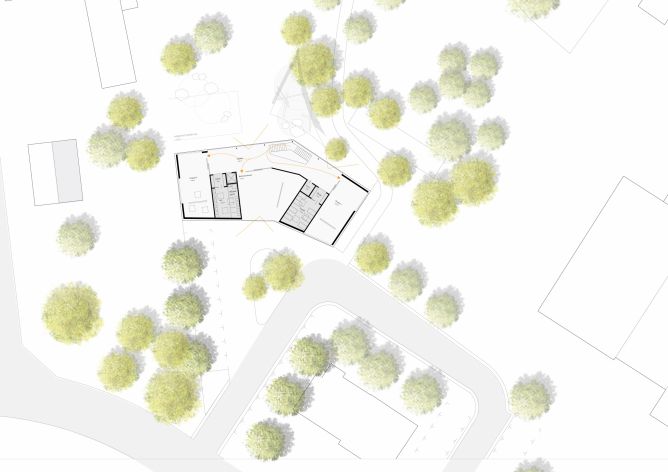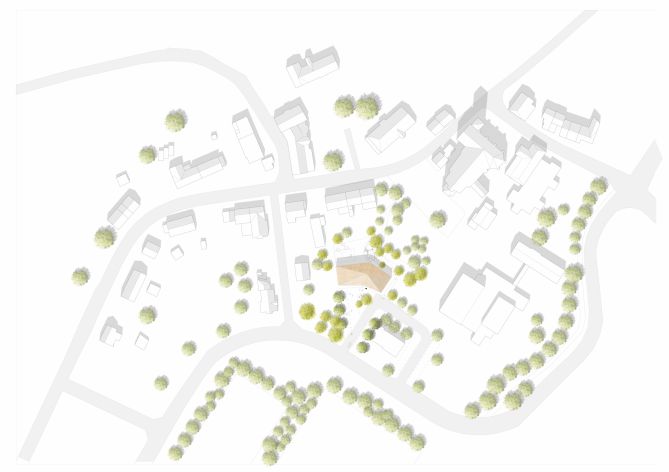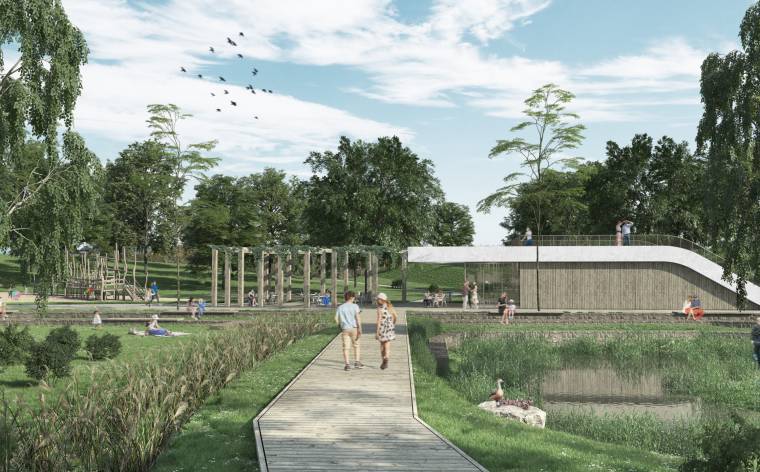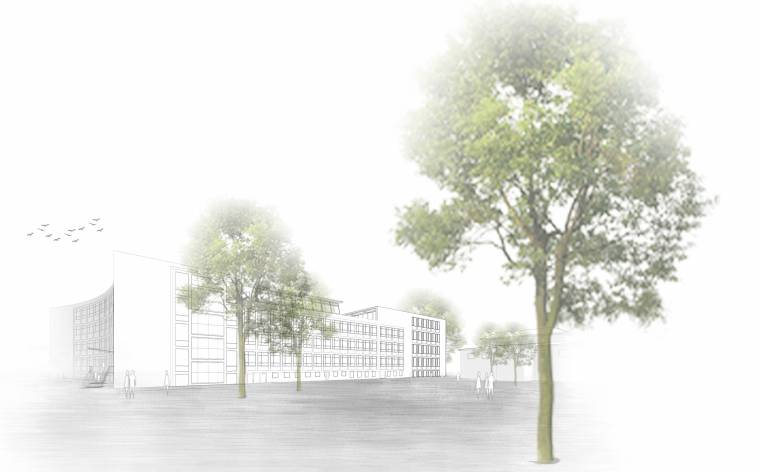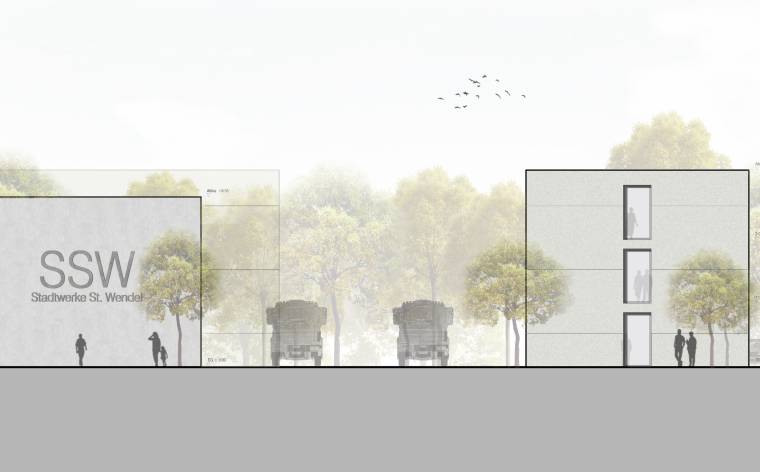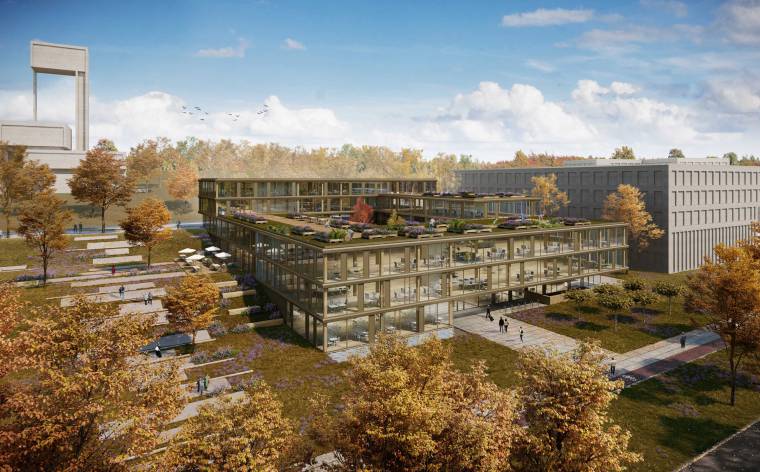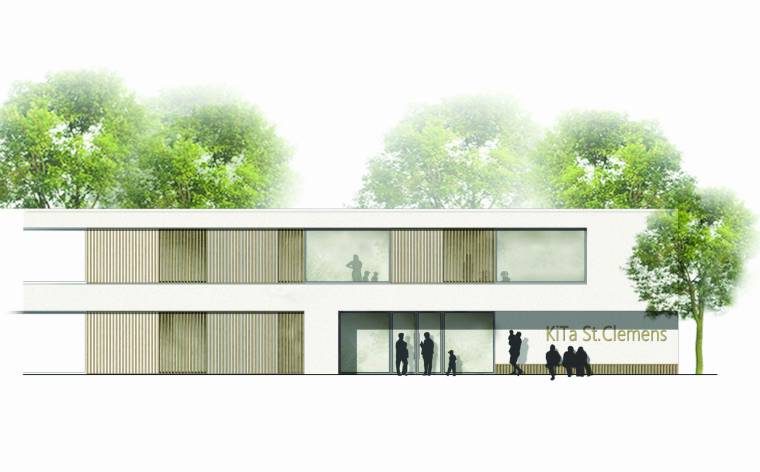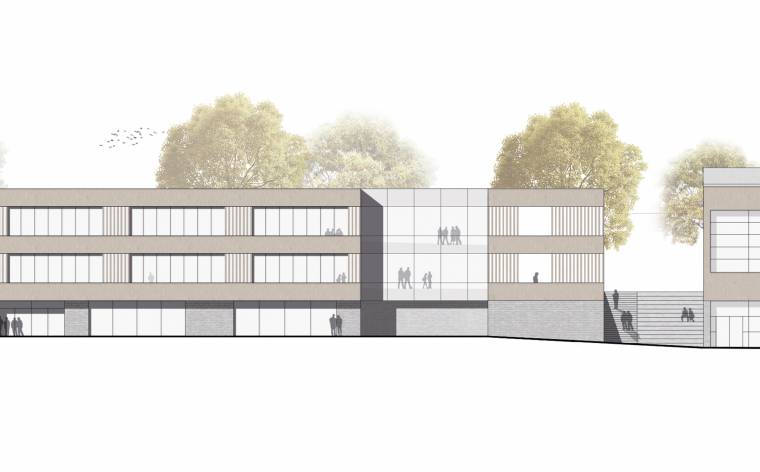Category :
Architecture competitions
Project :
New construction of an extendable children’s day-care centre
Client :
Ortsgemeinde Föhren
Country :
Germany
Area :
gfa 830 m²
Planning period :
07/2017 - 08/2017
Award :
2nd place, closed competition
Share on
Project New construction of an extendable children’s day-care centre in Föhren, including management office, cafeteria, multipurpose room and outdoor space for two groups. Awarding authority local community of Föhren (GER), architectural services WW+, Esch-sur-Alzette (LUX) / Trier (GER), GFA 830 m², gross cubic content 3220 m³, size of plan area 0.16 ha, competition 07/2017 - 08/2017 Prize 2nd place, closed competition
Location / Genius Loci
The available build parameter, a park-like area, lies in the heart of the locality of Föhren. In immediate proximity are the church, the Catholic kindergarten and the primary school. The characteristic feature of this location is the Moneteau park and its topography. The park features recreational facilities and connects to the church forecourt. Vehicle access to the site is via the southern street known as ‘Im Brühl’. Pedestrians can reach the area via the existing walkways in the park, from the town centre’s main road.
Urban development concept
By designing the children’s day-care centre as a compact two-storey structure, the required footprint is optimised in favour of as much green outdoor space as possible. Deliberately located on the southern boundary of the plot, the building – much like a pavilion – harmoniously and naturally blends in with the Moneteau park. Through adopting existing building lines of the surrounding structures, the new children’s day-care centre acts as a mediator in the midst of the heterogeneous environment and, as a result of its shape, divides the resultant spaces into a protected play area in the “park” and the more public arrival area. The orientation of the upper floor toward the Kiss & Go area creates an undercut, which acts as a covered entrance area and gives the buildings its clear and unique address.
Green space
The central design principle underlying the Föhren kindergarten is the merging of the structure with the green space of the park grounds. The ground floor – due to its generous glazing in the south and north – seamlessly flows into the play respectively free area of the kindergarten, which continues into the green park grounds. The equally generous windows on the upper floor guide the views into the crowns of the existing park trees. Much like sitting in a bird’s nest, children get to observe and experience the surrounding nature and the various seasons. The planned tent-like roof shape interprets the topographical conditions and supports the concept superbly.
Functional solution
From the Kiss & Go area, respectively the ‘Im Brühl’ bus stop, arriving children can directly and safely access the large and bright entrance area. The entrance accommodates storage facilities for pushchairs and the waiting area for parents, as well as the foyer and bistro. Designed as an extended green area on the inside, this area is flanked by two functional blocks. In the western block, adjoining the bistro, is the kitchen area with all its necessary functions as well as the toilet facilities and service rooms.
The eastern functional block is home to the staff area of the children’s day-care centre and the office of the kindergarten management. The clever arrangement of the staff rooms means that teachers always have a view onto the foyer, as well as onto the play area. The management office also has a direct view of the entrance.
Inside, a generous stairwell and a lift connect the ground-floor foyer to the upper floor. An airy space also creates a spatial connection between the two levels, its varied perspectives ensuring the interaction between the storeys. The spacious and welcoming play hall is surrounded by the two group rooms with their respective cloakrooms as well as the multi-purpose room. In between are the relaxation room and the toilet facilities for the children. All the functions are easily accessible for small users within very short distances. The building’s clear form and structuring provides children with an optimal sense of both direction and security. All the rooms foresee generous glass surfaces with opening casements. In addition to guaranteeing a myriad of interesting views both in and out, they also ensure the rooms are provided with optimal natural light and natural ventilation and extraction.
Materials
The material and energy concept is deliberately focused on longevity and sustainability. The scaling down of the construction and development to just a few authentic materials results in a discreet and timeless aesthetic. Robust durable surfaces ensure a low environmental impact. These materials are easy to care for and maintain their appearance over a long period of time. A differentiated wooden façade is continued in the interior in simple wood and plaster elements. The result is a contemporary, sophisticated appearance that also provides a cost-effective solution.
Energy concept
A further important component of the design is its energy concept. The very well insulated building envelope reduces the energy input into the building as well as its energy loss. Fundamentally, the plan is to reduce the building services to a minimum, so as to keep the investment costs as well as the operation and maintenance costs low.
As a central generation system, we suggest a geothermal heat pump in combination with solar panels. The heat supply is carried out entirely via the heat pump, which can be supported by panels in the event of low temperatures. During the summer, warm water heating occurs exclusively via the solar panels, with any potential surplus being re-stored for the purpose of ground regeneration. This combination increases the annual use of the heat pump significantly. All the building parts are heated via radiators. The energy footprint can be complemented by integrating photovoltaic modules, to further improve the ecological total energy performance of the building. These photovoltaic elements are ideally positioned on the roof. In general, the suggestion is to provide a robust building structure and uncomplicated easy-maintenance building services, which allow for a cost-effective construction and operation.
Expandability
In order to ensure that the children’s day-care centre can be expanded by a further group room, the suggestion is to convert the existing multi-purpose room on the upper floor for the additional group. The new multi-purpose room can then be erected as an additional structure on the ground floor. In the event of an increased need for childcare, the third group can be configured without any building lag and without any disruptive building effects and can be immediately integrated into the already existing groups. All the necessary infrastructures are already available. New and existing groups create a functional unit on the upper floor without any loss. During the building phase of the new multi-purpose room, the foyer can potentially be used as a temporary play and sports area. The planned green roof of the new multi-purpose room gives the surface, which has been sealed by the structure, back to nature and once completed can be accessed by the children as an outdoor play area.
Contact us !
